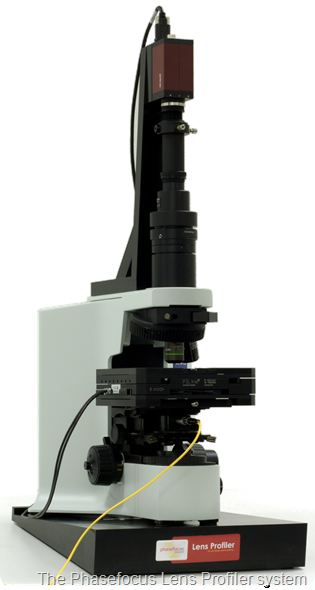Phase Focus Ltd (Phasefocus), the company that is revolutionising microscopy and imaging with the Phasefocus Virtual Lens®, reports on how optical lens practitioners are using the Phasefocus high-precision Lens Profiler to study potential clinical complications arising from corneal oxygen deficiency.
Contact lens manufacturers universally quote values for oxygen transmissibility (Dk/t) to the cornea based only on the centre thickness of a -3.00 dioptre lens. However, soft toric lenses – designed to correct for astigmatism – are designed with zones of increased thickness to enable on-eye orientation and stabilization. These regions of increased thickness can be associated with an increased risk of hyperaemia and new vessel formation. This is particularly significant given that many wearers admit to sleeping with their contact lenses in place.

A study published in the March issue of the journal Optician notes that, historically, it has been difficult to measure the thickness of any soft contact lens; the only technique recognised as an ISO-approved method measures centre thickness only. However, the Phasefocus Lens Profiler can map the thickness of any soft lens over the whole lens area, including lenses of complex geometry such as soft torics.
The study shows that the widespread policy of stating Dk/t based only on the centre thickness of a -3.00D lens does not generally provide a useful indicator for clinicians regarding the overall transmissibility on the eye; the values of average thickness within the central optic zone based on lens design and sphere power measured using the Phasefocus Lens Profiler provide a better indicator of the transmissibility of soft torics.
The study concludes that practitioners should be aware that lens design variations have the potential to impact on corneal metabolism and the quality of the wearer’s experience; and that by better understanding the design principles of the different brands, they will be in a better position to resolve clinical complications related to localised oxygen deficiency.
The Phasefocus Lens Profiler has been adopted by major lens manufacturers and research institutes as the de facto reference method for determination of soft lens thickness. As well as providing lens manufacturers with valuable insight for lens design and manufacture, the high precision thickness maps generated by the Lens Profiler can enable eye care practitioners to better understand the clinical applications of complex lenses. With the growing interest in specialist soft lenses the potential for wider use of this technology is considerable.
Background information: Optician, and its online companion, Opticianonline.net, are the UK's leading information sources for eye care professionals. Published by Reed Business Information, Optician has a readership of approximately 17,000 eye care professionals. The authors of the study are Tony Hough of CLS Software, and Andrew Elder Smith, a UK registered optometrist, Principal Consultant and Educational Programme developer for Contact Solutions Consultants.
For more information on ptychography and its applications, please visit the Phasefocus web site: https://www.phasefocus.com/.